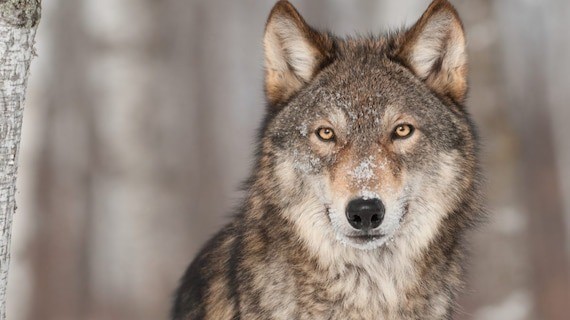
They’re back.
The symbols of Rome and the Italian Republic.
The muse of Italy’s mythical spirit.
Il Lupu Italiano.
The Italian wolf—the creature who has staged one of Europe’s greatest wildlife comebacks.
From a ragtag bunch of just 100 in 1980, the Italian wolf now numbers 3,000—maybe more—on the peninsula.

⸻
Massive Increase
It was once the clarion call of field biologists: The Italian wolf is on the verge of extinction! Scientist said only one or two packs were alive in the central Apennines. Now, all of Italy—with the exception of Sicily and Sardinia—have wolves. So many are seen and recorded by smartphone video, today, that current estimates of 3,000 are likely—understated.
The rate of increase in the number of wolves in Italy is extraordinary—from 1980 to today—2,900%!
Packs now roam, not only the Abruzzo mountains and Tuscan hills, but on the outer fringes of Rome, Genoa, and Italy’s coastal beaches where hordes of vacationers come every year.
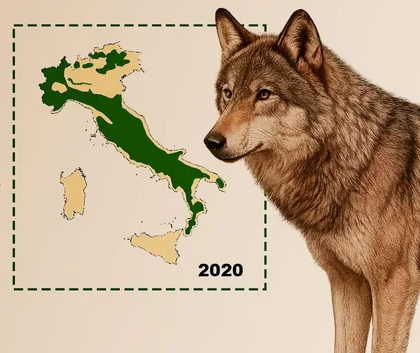
⸻
Scientific Methods Questioned
What did Italian scientists do to bring back the wolf? Nothing. The animal was not “re-introduced” in Italy as it was in the Rocky Mountains and the Carolina swamps in America. Outside of Alaska, the United States claims the same number of wolves as does Italy.
A subspecies of the gray wolf, the animal rebounded in Italy, naturally—all on its own.
The massive increase of wolves in Italy raises questions about the work of field biologists and other environmental scientists. Their assessments from decades ago seem grossly inaccurate, today. Did they undercount the animal’s presence—intentionally—for purposes of pushing protections and new laws? Or, were the means of estimation—still in use today—inherently flawed and misguided?
Italy—the size of Arizona—is a country beset by mountains, hills, and forests—many of which are difficult to penetrate due to their incessant crags and obstructions. Scientists cannot explore every inch of space for an accurate accounting of wolves and other animals—even with the help tracking tags and other instruments.
Italians—everywhere—now carry smartphones. They can instantly record a wolf sighting to be uploaded to YouTube and social media sites. Ample sightings of the animal can now be seen on social media. Such evidence contradicts the narrative of a threatened species.

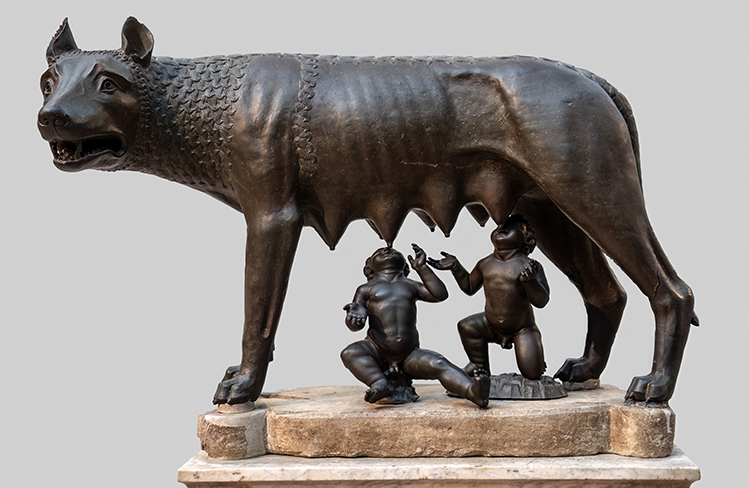
Still photos from a smartphone video of a wolf roaming in the outskirts of Rome; the bronze statue of the Capitoline Wolf
⸻
Wolves On The Prowl
The wolf is not endangered. Rather, the wolf is now posing a serious threat to Italians who live near forests, at the foot of mountains, and near beaches.
In the last five years alone, Italy has recorded more wolf attacks than Spain, France, Germany, Switzerland, Portugal, England, and Greece combined.
Something unprecedented is unfolding.
⸻
Rome: The Wolf at the Gate
The Capitoline Wolf’s descendant is here. The likeness of the she-wolf who suckled the founders of the Eternal City—Romulus and Remus—has been seen in the Parco delle Sabine.
In late September, residents of a quasi-rural district outside Rome, began posting photographs and video of what looked unmistakably like a wolf strolling the wooded paths at dusk.
The Lazio environmental directorate quietly deployed wildlife technicians to the area. They then brought in a “telenarcosi” team — specialists trained in dart capture — to avoid public panic. On the night of September 25, around 9 p.m., the young female wolf was sighted near Colle Salario. A single tranquilizer dart brought her down.
She was found in good health, swiftly transferred to a secured enclosure at the national park in Abruzzo.
Regional Assessor Giancarlo Righini praised the operation as “efficient, discreet, and respectful of the animal’s welfare,” emphasizing that protecting wildlife and ensuring public safety “must go hand in hand.”
Scientists reported that the she-wolf was not an anomaly. Rather, many wolves are now roaming in packs just a few miles outside of Rome. This particular wolf had become curious, habituated — even sociable, the most dangerous condition for a wild predator.
⸻
The Vasto Wolf in Abruzzo
No region in Italy has seen more wolf activity than Abruzzo. The she-wolf of Vasto—a coastal commune in Chieti—made national headlines after she attacked a number of Abruzzese over a two-year period.
The wolf was amazingly fearless. She stalked people at beach towns. She chased tourists. She attacked children and a lifeguard.
In 2022, the wolf bit a 12-year-old boy on the beach at San Salvo. Some weeks later, nearby, she pounced on several children. A 30-year-old lifeguard was chased and bitten by the wolf on August 11 near Varigotti.
Parents complained of having to pull their children away from the beach when the wolf attacked. The pattern was unmistakable: this wolf — and possibly her offspring — had lost natural fear.
In 2024, biologists suspected a lineage problem: young wolves genetically related to the Vasto female appeared in adjacent territories, behaving in eerily similar ways.
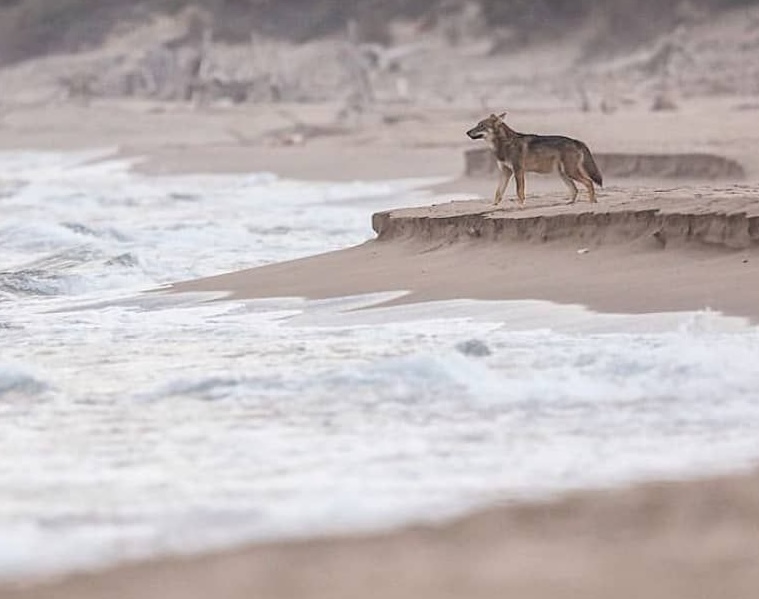
A wolf roaming on an Italian beach.
⸻
The September 7 Attack in Casalbordino
On September 7, as the sun set over the beach of Casalbordino, in Chieti, a 49-year-old man from Potenza was walking with his wife and young children near a seaside campsite.
From behind the dunes, a wolf lunged.
The man shielded his family, was bitten on the leg, and managed to escape. He required hospital care in Vasto with a recovery time of five days.
Hospital staff swabbed the wound for DNA — part of a recently introduced national procedure — and sent the sample to ISPRA, Italy’s wildlife research institute.
Majella National Park veterinarian Dr. Simone Angelucci noted that if this wolf proves to be part of the Vasto lineage, and if it has attacked multiple humans, it can no longer be released and must instead be permanently placed in a wildlife recovery center.
The victim later filed a formal complaint with the mayor of Casalbordino, arguing that tourists were not properly warned of the wolf’s presence.
_____
Liguria—Father and Son Attacked
On August 19, 2024, a father and son were attacked by a wolf in the Liguria region.
Liguria’s Wildlife and Hunting Surveillance Department confirmed the involvement of a wolf from a Lombardy-origin pack of five wolves.
Surveillance cameras allowed authorities to accurately track the animal. The wolf was captured, radio-collared, and released rather than removed.
This decision ignited a political firestorm to raise questions about Italy’s wolf-management strategy: Should wolves that attack people be studied, released, or killed?
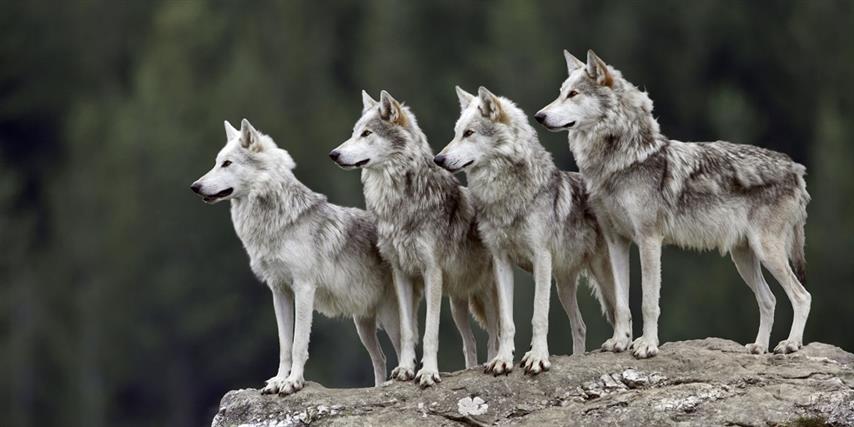
⸻
Italy Is Now Wolf Country
At 3,000, Italy’s wolf population is now the largest in Western Europe.
How Italy’s wolf population compares to other countries:
(Approximate numbers)
• Spain: 2,000
• France: 1,100
• Germany: 1,300
• Switzerland: 350
• Portugal: 300
• Greece: 700–800
• England: 0 (no wild wolves)
Only Italy and Spain have wolf populations robust enough to expand into densely populated regions — but Spain has far fewer wolf–human conflicts, partly due to stricter culling policies and less suburban encroachment into wildlife corridors.
⸻
Sicily and Sardinia: Are Wolves Present?
The wolf in Sicily was a unique subspecies that went extinct in the early 20th century. As of today, there is no evidence of wild wolves on the island.
No native wolf population exists in Sardinia. Occasional rumors persist, but no confirmed wolves have been seen on the island.
⸻
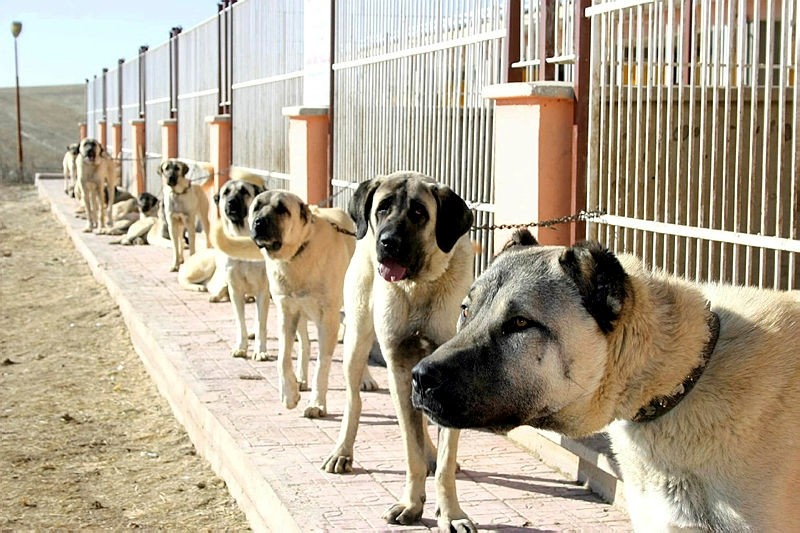
A Hero Comes…The Kangal Dog
In Tuscany, sheep and goats are increasingly slaughtered by wolves. Prized cows have been taken down outside Florence by ravenous packs. Attacks are occurring daily. Some farmers have used poison—illegal under Italian law—to kill the predator. Yet, the wolves keep coming. Something must be done to save livestock.
The dog that Italian farmers often turn to for protection of sheep and cattle is the Maremmano-Abruzzese. The white haired canine has been present in Italian farms for centuries. The sheep dog remains reliable security for livestock. However, packs of wolves have grown in size in recent years to out maneuver and kill the dog.
Farmers are beginning to look elsewhere for help. Owners of livestock in Tuscany want a larger dog to take on wolves. Their answer—Turkey. The dog they seek— the Kangal.
Named for a village in Turkey, the Kangal is a sheep dog, heavier and faster than the Maremmano-Abruzzese. The dog is famously aggressive, at times vicious in demeanor. The dog is difficult to train. Yet, once fully domesticated, the Kangal’s raw power can take on two to three wolves at once.
____

A still photo—from a smartphone video—of a wild wolf prowling in Rome.
Can We All Just Get Along?
Italy stands at a rare moment in environmental history.
The wolf has returned — fully, magnificently, powerfully. Today’s Italy is more crowded, more suburban, more touristic, and more digital than the rural country of long ago.
Every photograph of a wolf near a playground, every video of a wolf on the beach, every DNA-confirmed attack forces the country to ask: Can Italy remain the most wolf-tolerant nation in Europe…?
Italy’s challenge now is not whether wolves will survive, but how Italians will live with them.
A new national policy is needed: One that respects the wolf — and protects the people.
Until then, the wolf will continue to roam across the peninsula, from the Abruzzese hills to the gates of Rome…
and Italians will continue to walk the thin line between admiration and fear of the animal. The words of Dante ring true—from the Inferno, Canto seven:
“Be silent, accursed wolf! inwardly consume thyself with thine own rage”
Editor’s note: The Italian wolf—canis lupus tialicus—is a subspecies of the gray wolf, one of two breeds most often found in the United States; the other is the red wolf. The Italian wolf is smaller in size and weight than the gray wolf. The official web site for the national park in Abruzzo—where many wolves are spotted—is: https://www.parcoabruzzo.it Below is a video taken in Tuscany, last year, showing a pack of wolves. A farmer in Italy took the second video of wolves prowling the outskirts of his farm. The dogs employed to guard his livestock are the Maremmeno-Abruzzese.
—————————————————————————————————————————————————————————————————————————————
Please visit our DVDs Page to shop our latest collection of DVDs on all things Italian: Films from Italy's Golden Age, Documentaries on Italian American life, ancient Rome, and religion.
Please visit our Books' page to review our latest inventory of books on all things Italian: cookbooks, history, art and culture.
Other articles to read...